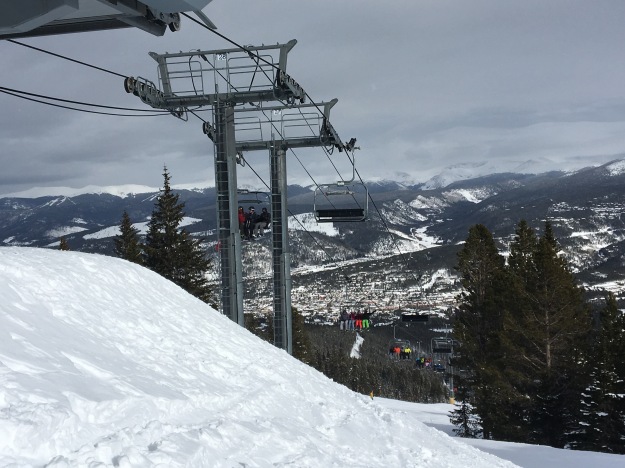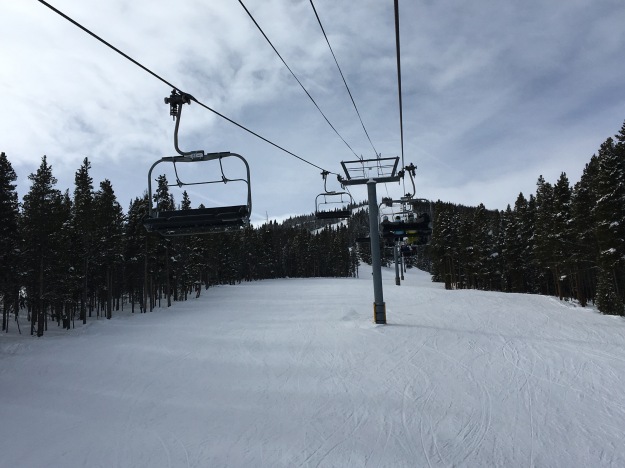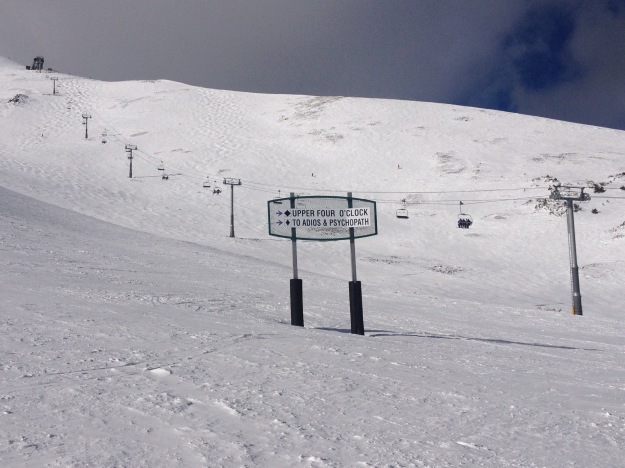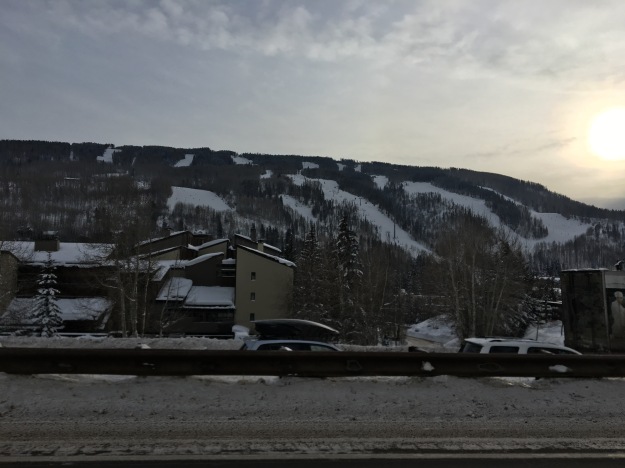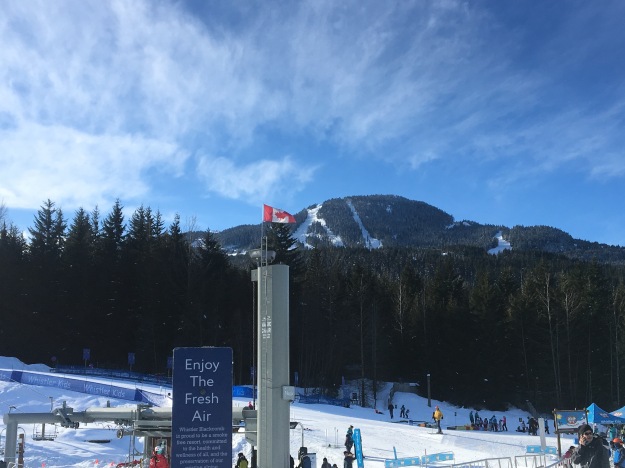
Changes in weather patterns can bring risks, or even hardship, but can also bring opportunities. 2017-2018, in some ways, can be thought of as a peculiar winter in Western North America. Storms kept impacting the same region over and over again. Some areas received over twice their normal precipitation, while others received less than half.
Weather cannot be controlled, and, probably shouldn’t be. It is possible, however, to make adjustments to make the most of the weather. While this was not a stellar snow year (compared to average) in places like California, Colorado, and Utah, conditions made this season a perfect time to visit North America’s largest ski resort: Whistler-Blackcomb. Located 120 km (75 miles) north of Vancouver, Whistler-Blackcomb is the 11th largest ski resort in the world.
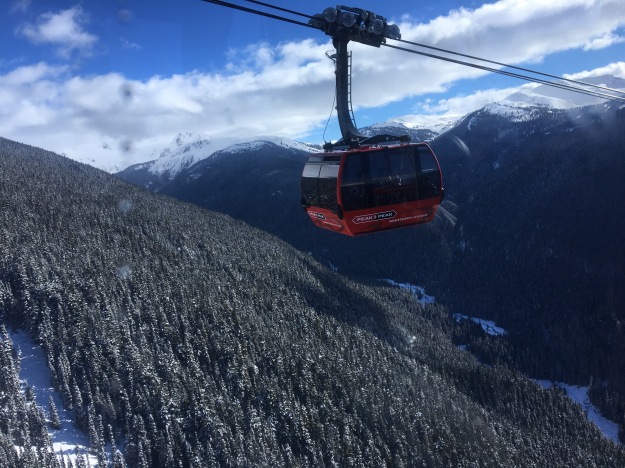
As is the case with many of the other largest ski resorts in the world, Whistler-Blackcomb is the result of a merger between two mountains. Once competitors, the two mountains merged 20 years ago. To connect the two adjacent resorts, they built the Peak to Peak Gondola. This 11 minute ride brings skiers/boarders between the midpoint (and fairly high on the mountain) of one mountain and the other. It covers a distance of 2.73 miles (4.4 km) over a deep valley that separates the resorts. At its midpoint, it is 1430 feet (436 m) off the ground!
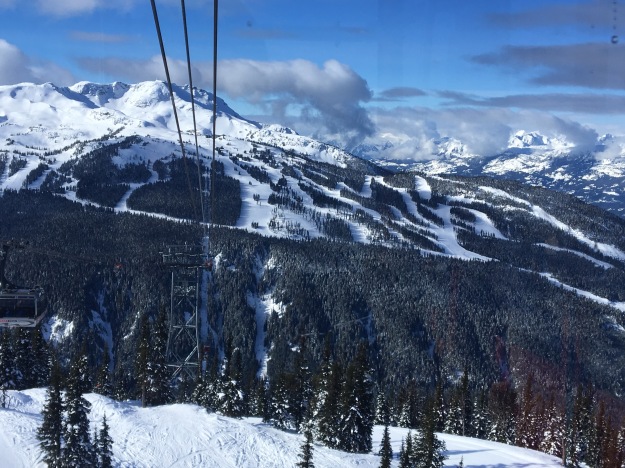
Just getting to Whistler-Blackcomb, before even reaching the mountain, is an amazing experience! The drive from Vancouver International Airport takes about two hours along highway 99 through the heart of Vancover.
There is no limited access highway that connects Vancouver International Airport to downtown. This adds time to the journey, making what should take little more than 90 minutes take closer to two hours. However, it is interesting for visitors to actually see the city. Vancouver is quite dense, with a very urban feel (as opposed to some sunbelt cities that feel more suburban in nature). The two things that stand out the most about the city are..
- Despite the fact that rains, on average, 161 days out of the year (notice the rain in these photos), cycling appears to be extremely popular, with bike lanes and bike shops everywhere!
- Literally, every nationality of food can be found in downtown Vancouver: Portuguese, Peruvian, Malaysian, you name it, it’s there!
This is followed by a drive along highway 99, also known as the “Sea to Sky” highway.
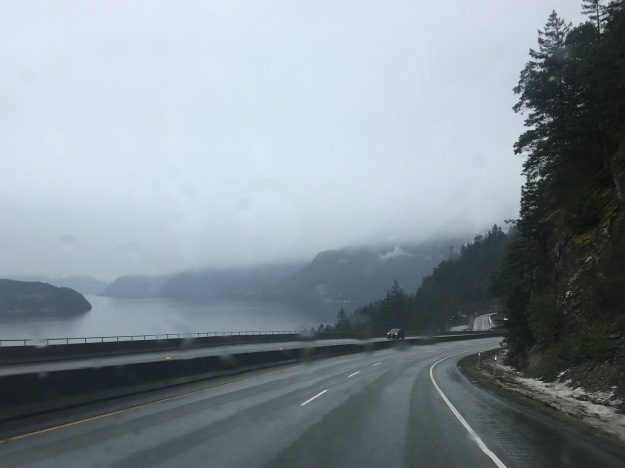
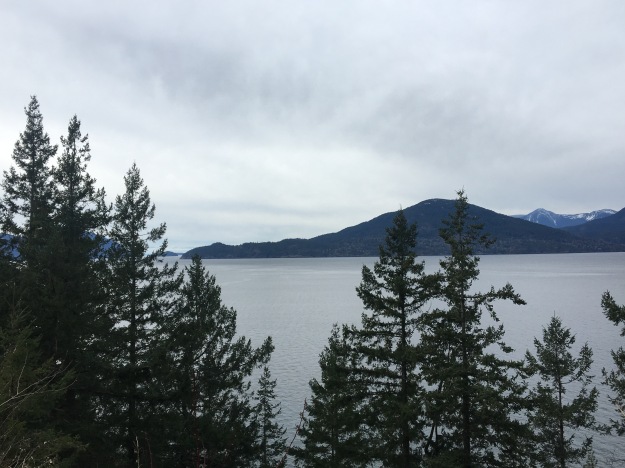

The drive itself is quite exquisite and unique. The road winds northward, adjacent to a bay, from which tree covered islands pop out periodically on the left. On the right, the coastal cliffs are quite dramatic, and periodically rocky.
If caught while the sun is shinning, which is common in the summer but quite rare in winter, the views of the mountains can be quite amazing!
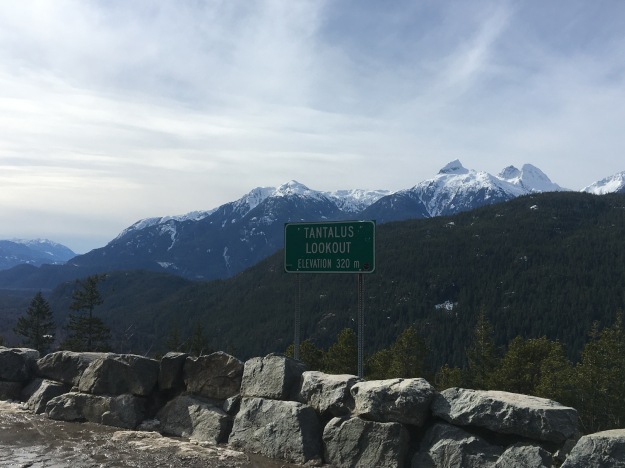

The mountain itself is spectacular, and steep! With a 5,280 foot vertical drop, it is surpassed, in North America, only by Revelstoke Mountain, a significantly smaller resort. For comparison, Vail has a vertical drop of 3,450 feet, and there are plenty of ski resorts whose vertical drops are only a little over 2,000 feet that are talked about quite positively (Grand Targhee, Alta, Stowe, etc.).
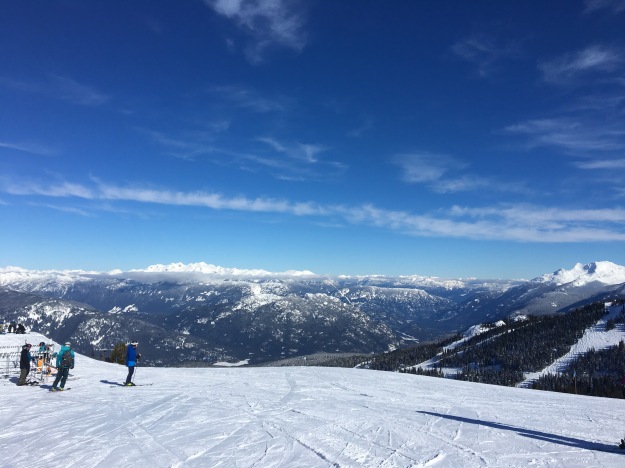
Ski trails at Whistler Blackcomb can be steep and long. However, there are trails of all kinds here, as to be expected.
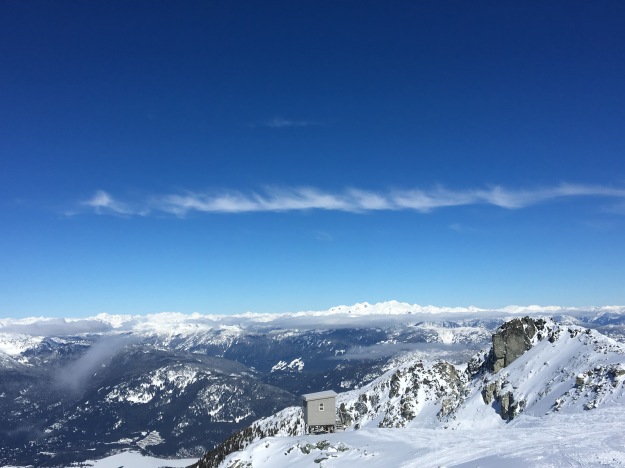
Highlights include the top of Whistler Peak.
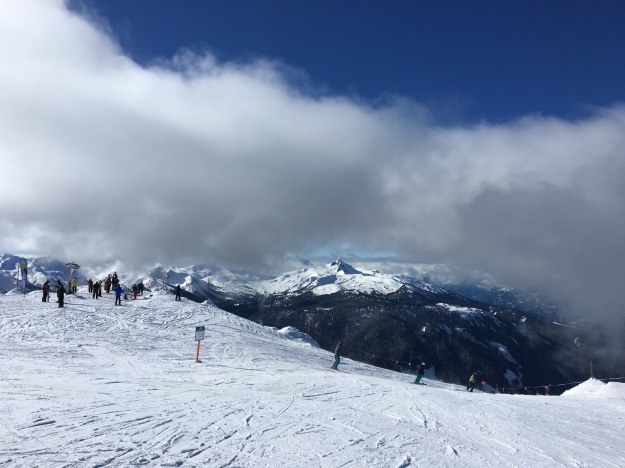
Finding a place to make fresh tracks in the snow.
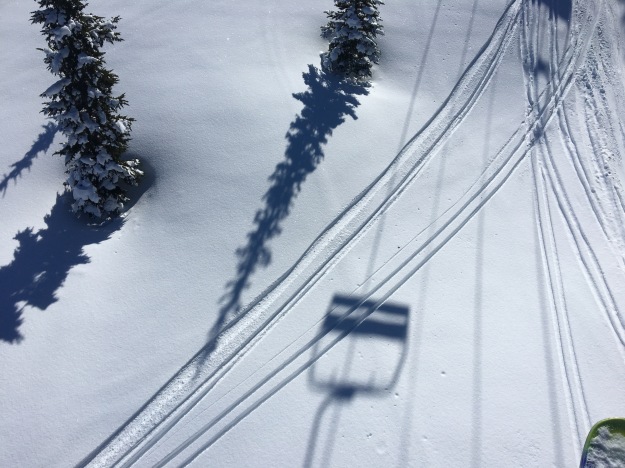
And, of course, the Dave Murray Downhill, where the downhill competition took place for the 2010 Olympic games.
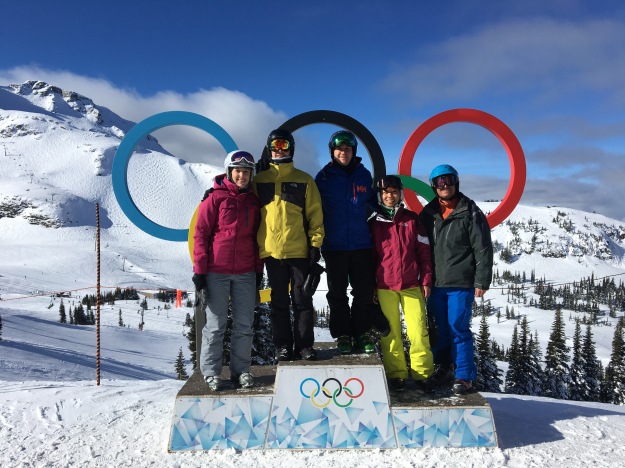
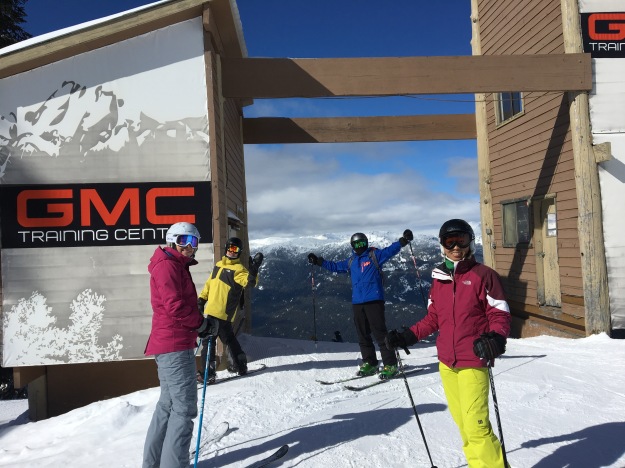
These experiences can commonly be hampered, however, by the weather. In particular, on a typical day, layers of clouds often form somewhere about 1/3 to 1/2 of the way up the mountain.
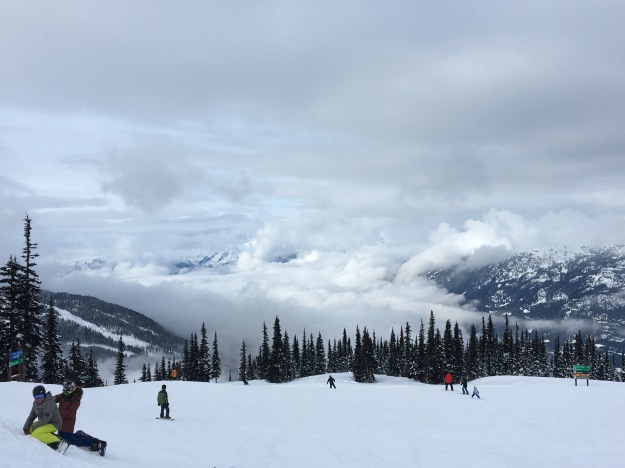
Many skiers and boarders chose to stay either above or below this layer of clouds. Traversing through this layer of clouds is a unique, albeit stressful, experience.

As is the case when driving through dense fog, it requires moving slowly, and it is very easy for groups of people to lose each other in this thick set of clouds. Let’s just say, there is a reason this picture was taken on the lift ride up and not while skiing down the hill.
Whistler Blackcomb is in bear country, and they appear proud of it! On the Peak-to-Peak gondola, the information signs, in addition to pointing out its the length, speed, and height, of the gondola ride, mentions the fact that the forest it traverses over is home to over 60 bears.
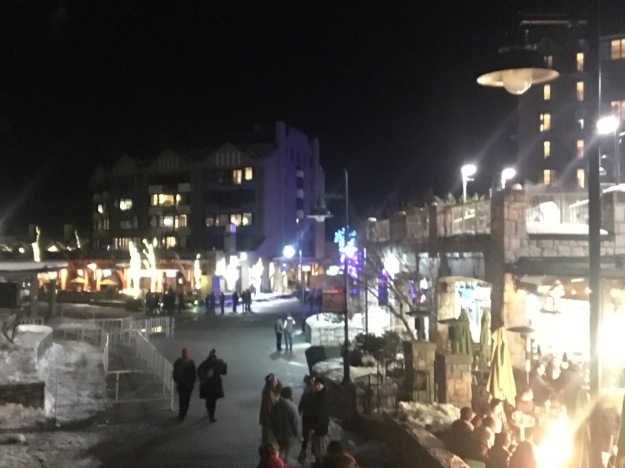
A major part of any ski trip experience is the town, where travelers go for food, amenities, shops, and other forms of entertainment. Not all ski towns are equal, as some provide a more active and others a quieter ski experience. Whistler’s experience is definitely middle of the road with respect to the quiet and cosy vs. active and loud experience. However, there is some variance here too.
There are two parts to Whistler village, an upper village and a lower village. Both connect to the mountain via gondolas. The main village is a bit larger and more active than the upper village, with a variety of food options and even several clubs.
Outside the village, there are plenty of ski-in/ski-out resorts, which is quite convinent. As is typical of any ski town, lodging can be expensive, and finding a place to stay at the price range most people are looking for can be a challenge.
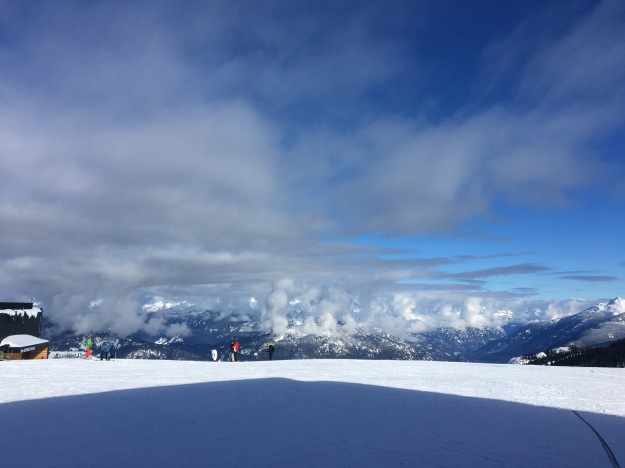
There are some out there that wish to never have the weather, or some other kind of external event change their plans. Its an unwelcome inconvenience to have to research something new, make a different plan, spend money, and have to travel when not expected. However, sometimes these changes in plans, whether forced by weather or a different external factor, are the driver for creating new, different, and sometimes life-changing experiences.
Some would say this has been a peculiar winter, but, on a larger scale, there has always been variance in weather patterns. The average temperature is not the temperature experienced every day and the average precipitation is not the amount of precipitation experienced every year. It is normal to differ from the average, from year to year. These variations may be getting close to causing danger in some places in the West this year, but that is also fairly typical.
Whether people traveled north to experience better snow to ski on, or traveled south to get some sun, the variation in weather patterns this year, while inconveniencing many, also created its fair share of memories.










